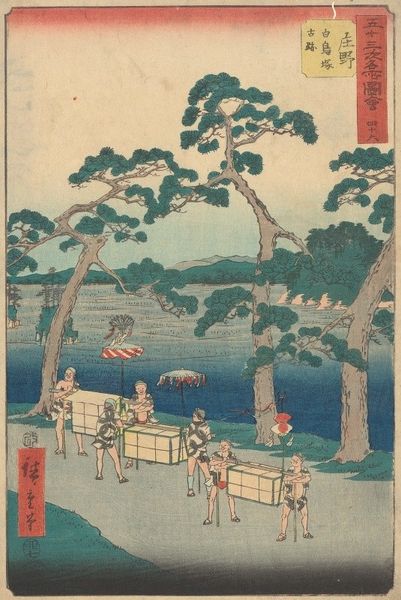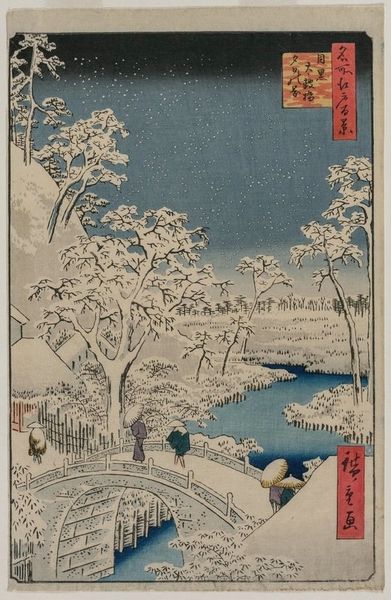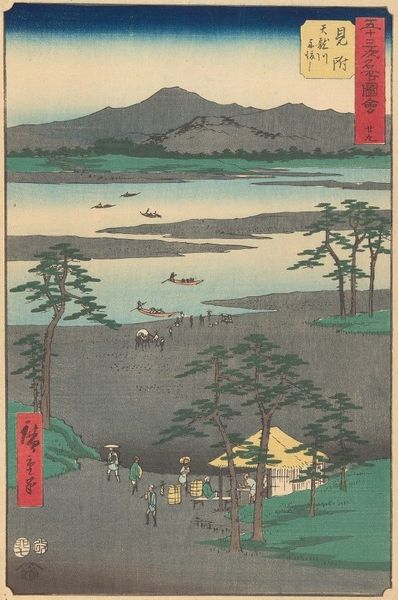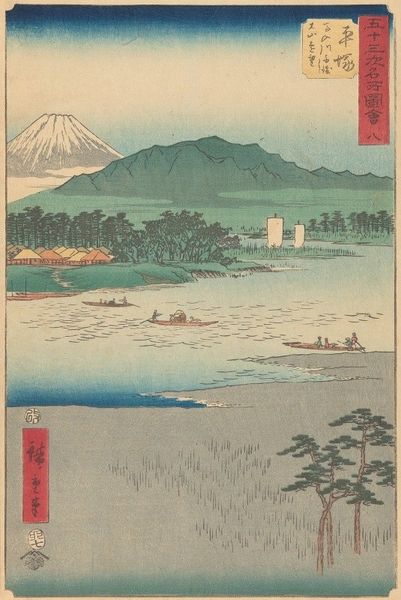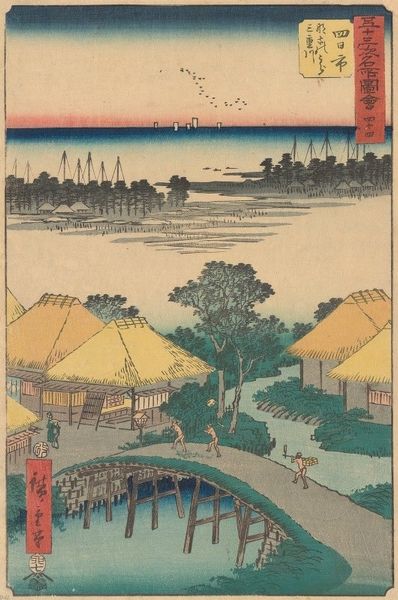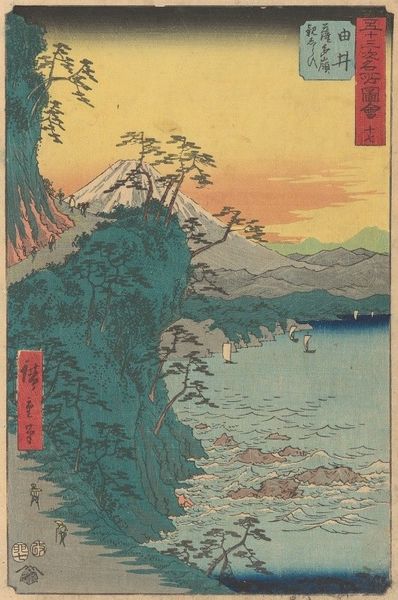
print, woodblock-print
# print
#
asian-art
#
landscape
#
ukiyo-e
#
woodblock-print
Copyright: Public Domain: Artvee
Curator: This is "Hamamatsu," a woodblock print by Utagawa Hiroshige, created around 1855. What strikes you first about it? Editor: The overall somber mood. The muted blues and grays...it feels almost melancholy, like a sigh carried on the sea breeze. Curator: I find it quite calming, myself. The way the pine trees frame the scene, their branches gnarled but graceful, and the subtle shift in perspective drawing us towards that distant shoreline. Editor: But consider the historical context! These landscape prints, while seemingly idyllic, were produced during a time of immense social upheaval in Japan. Commodore Perry had just arrived, forcing the country to open its doors to the West. Was this perhaps Hiroshige's way of yearning for a fading past? Curator: Perhaps. Or maybe it’s a celebration of place and human connection. Look at the figures gathered on the shore; their communal presence juxtaposed against the vastness of the sea. Are they seeking solace in each other's company? Celebrating some seasonal moment with lanterns in the evening, offering prayers for stability or for change? The landscape offers room for all the feelings of a complicated now. Editor: True. And those lantern posts feel strangely...optimistic amidst the stillness, illuminating a pathway, signaling hope for a transformed era perhaps? Curator: They could suggest anything, couldn't they? They guide our eye to that far shore, beckoning toward mystery and infinite possibility. It’s beautiful how something crafted with such precision allows for endless reading. Editor: Ultimately, it demonstrates art's remarkable ability to be both deeply personal and profoundly reflective of larger cultural shifts. To resonate across time... Curator: …like a single flute note carrying a melody of memories over those ocean waves. Thanks for that lovely meditation on art, society, and the infinite ocean in between.
Comments
No comments
Be the first to comment and join the conversation on the ultimate creative platform.






